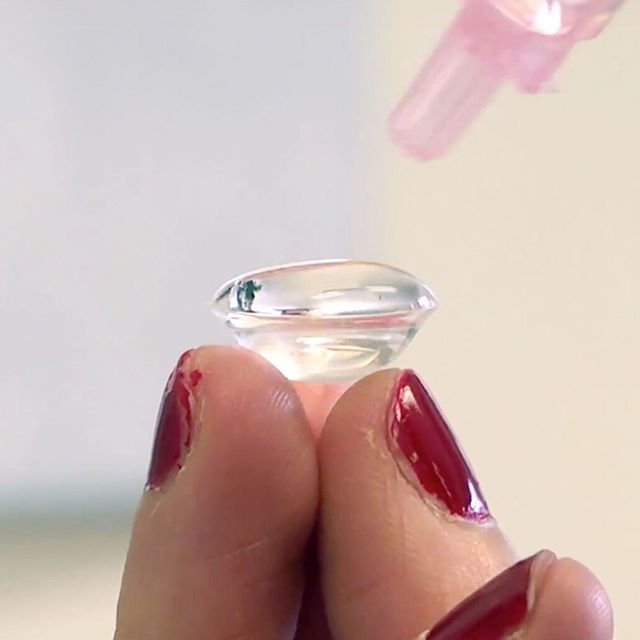Dry eye, especially with most of my patients living here in the Desert, is extremely common. Some of the symptoms of dry eye can include blurry vision, burning, itching, excessive tearing (especially when outdoors and windy), redness, and irritation.
A good test to see if you have dry eye? When your vision becomes blurry, if you blink a few times, does the vision become clear and then blurry again? This fluctuating vision is because our tears actually help us to see better. They are part of your “prescription” meaning that light has to refract through the tears in order to create clear images. In our office, obtaining consistent glasses prescriptions is more difficult when vision changes with the blinks of dry eye.
Many patients who come to me say that they have tried contact lenses in the past and that they are unable to wear contact lenses because they “dry up on the eye” and are uncomfortable.
Because we are a specialty contact lens office, we have many ways to help our patients start to wear their contact lenses again.
The first is to take an assessment of your dry eye, what types of lenses you have worn in the past, your cleansing and storing solutions, and take imaging to see if your dry eye has created an irregular corneal surface (resulting in poorer vision).
These are all things that we do in our practice that lead us down the path of treatment that would be best for our patients.
So which contact lenses are best for dry eye?
The first step is to have a customized treatment that treats your dry eye from the root cause. Artificial tears (lubricating drops) are great but are like band-aids, treating the symptoms but not the cause. Your personalized treatment will be given at your examination after an evaluation and can include anything from warm compresses, supplements, lifestyle changes, topical medications (drops), oral medications, or referral for in-office treatments. Treating the root cause of your dry eye FIRST is imperative to getting the best results with ANY type of contact lens.
Soft contact lenses are manufactured with different materials, sizes (one-size-fits-all versus custom), edge profiles, oxygen permeabilities, and wetness factors. These all interact with your eye differently. For example: one lens has been manufactured to be specifically beneficial for dryness because the material attracts water on the outside of the lens but the inside of the material repels water (making it so the water isn’t taken directly from your eye, making it drier). We will decide which of these designs and profiles will work best with your eye.
Rigid contact lenses are made out of a completely hard plastic that allows oxygen to pass through the lens. These can correct irregularities on the front surface of your eye (oftentimes caused by dryness) and give you much sharper vision that soft contact lenses. These can be worn by patients with dry eye but dry eye will have to be treated first.
Scleral contact lenses are for patients who have tried all types of dry eye treatment and are still finding no relief or ability to wear contact lenses comfortably. These are a large-diameter (around 13.8 to 17mm) lenses made of a rigid plastic material that you fill with a saline solution prior to inserting the lenses on your eye. This solution fills in any “gaps” or “irregularities” on the front surface of your eye, giving you very sharp vision. It also stays on your eye all-day, allowing you to have all-day moisture. Scleral lenses allow patients with extremely dry eye that is resistant to most treatments to wear lenses comfortably all-day. This is the most advanced treatment. We have three types of scleral contact lenses available at our office from conventional, scan-designed, and mold-designed scleral lenses.


